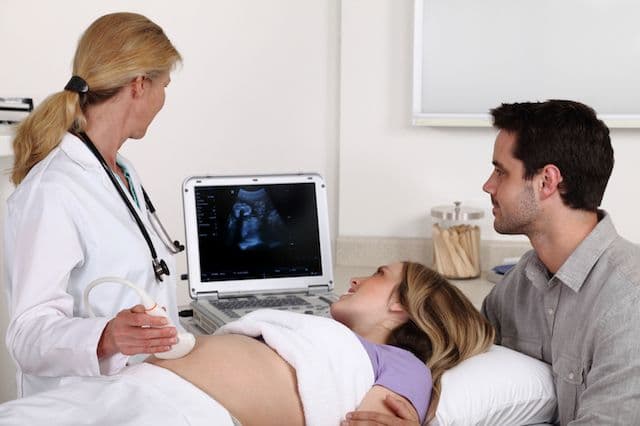Intrauterine Growth Restriction Guideline Study
Pregnancy News
Obie Editorial Team

Roughly 10% of pregnancies could present with fetal growth restriction, yet the path to identifying potential cases hasn't been crystal clear. But worry not, because pioneering research is striving to establish solid, evidence-based guidelines.
### Insights from Research
A groundbreaking study published in the *Journal of Obstetrics and Gynaecology Canada* tapped into data from medical literature searches using PubMed, The Cochrane Library, and more. Here, researchers examined factors differentiating normal pregnancies from those affected by [intrauterine growth restriction (IUGR)](/complications/small-gestational-age-sga-intrauterine-growth-restriction-iugr).
### What You Need to Know and Do
1. **Ultrasounds Are Key**: The quintessential tool for assessing the risk of [IUGR](/complications/small-gestational-age-sga-intrauterine-growth-restriction-iugr) is the ultrasound. Embrace it as your ally in monitoring your baby’s growth.
2. **Accurate Pregnancy Dating**: Getting your pregnancy dates right is critical. Don’t underestimate the value of a thorough menstrual history. Combining this with precise [ultrasound measurements during pregnancy](/ultrasound-measurements-in-pregnancy) like femur length, head circumference, and abdominal circumference, gives invaluable insights.
3. **Consider Assisted Fertility**: Were any [assisted reproductive technologies (ART)](/infertility/art-assisted-reproductive-technology) used to conceive? These can influence fetal growth and should be factored into assessments.
4. **Monitoring**: If IUGR is diagnosed, regular and detailed monitoring becomes your strategy to prevent complications like [stillbirth](/after-stillbirth-take-your-time) or [premature birth](/complications/premature-birth). Frequent check-ins with your healthcare professional are crucial.
### Empowering You
The knowledge and tools are here to support you in navigating your unique pregnancy path. Collaboration with your healthcare provider will ensure the most appropriate steps are taken to address your concerns or challenges.
Researchers like Lausman A, Kingdom J, and the esteemed Maternal Fetal Medicine Committee are hard at work so that medical advice not only informs but truly empowers you. Now, armed with this understanding, you’re well-equipped to ask informed questions and make impactful decisions regarding your and your baby's health.
Continue to learn, engage, and advocate for your pregnancy journey. If you’re looking for more information, check out more [here](https://www.ncbi.nlm.nih.gov/pubmed/24007710) at PubMed.
Warm regards,
[Your Healthcare Team]







